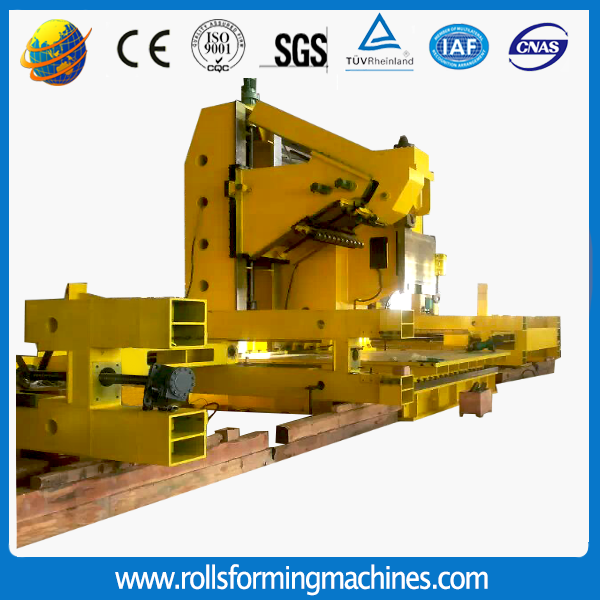Mine flood prediction and water inrush
The prediction of mine flooding refers to determining the danger degree of mine flooding according to the hydrogeological data of geological exploration and the special water damage survey data before mining, and compiling the mine flood forecasting map.
(1) Determination of mine flood hazard level
1 Use the water inrush coefficient to determine the danger level of mine water damage. The water inrush coefficient is the ratio of the hydrostatic pressure (kPa) in the aquifer to the thickness of the aquifer (m). The physical meaning is the limit water pressure that can be withstood by the thickness of the unit.
2 According to the influencing factors of hydrogeology, determine the danger degree of mine water damage. The method divides the risk of water damage in the mining area into five grades according to the complexity of hydrogeology.
(2) Preparation of mine flood forecasting map. According to the thickness of the aquifer and the water pressure value of each part of the mining area, calculate the water inrush coefficient of a certain mining level, compile a simple water inrush prediction map of the corresponding proportion, and then delineate the safety zone and the danger zone according to the critical value of the water inrush coefficient of the mining area. Another method for compiling flood forecasting maps is to define the level of groundwater disasters on the mining plan, and to formulate the best mine planning and measures to prevent water damage, strengthen the monitoring of hazardous areas, and ensure safe production.
2. Mine water inrush
The mine water inrush process is mainly determined by the mine hydrogeology and mining site conditions. The general water inrush accident can be summarized into two situations: one is that the water inrush is smaller than the maximum drainage capacity of the mine, the groundwater forms a stable falling funnel, forcing the mine to drain a large amount of water for a long time; the other is that the water inrush exceeds the maximum drainage capacity of the mine. Causes flooding of the entire mine or local mining area. Before the occurrence of various types of water inrush accidents, a variety of water inrush warnings are generally displayed.
(1) General omen:
â‘ coal layer becomes wet, soft; coal appears to help dripping and sprinkling phenomenon, and water spray from small to large; sometimes appear to help coal iron rust-colored water stains.
â‘¡ working surface temperature decreases, or appear mist or hydrogen sulfide odor.
3 Sometimes you can smell the sound of water.
4 The mine pressure increases, and the chip, the top and the bottom drum occur.
(2) Water inrush in the limestone aquifer of the working face floor:
1 The working face pressure increases, the bottom plate bulges, and the bottom drum sometimes reaches more than 5OOmm.
2 The bottom surface of the working surface is cracked and gradually increases.
3 Water seeps outward along the fissure or coal. As the fissure increases, the amount of water increases. When the water seepage of the bottom plate increases to a certain extent, the coal seepage may stop. At this time, the water color is clear when it is clear, and when the bottom plate is active, the water becomes cloudy; when the bottom plate is stable, the water color becomes clear.
4 The bottom plate is broken, and high-pressure water is sprayed along the crack, accompanied by a “beep†sound or a harsh underwater sound.
5 The bottom plate has a "bottom explosion" with a loud noise, a large amount of groundwater, and the water color is milky white or yellow.
(3) Water abrupt signs of loose pore aquifer:
1 The water inrush, dripping and dripping water gradually increased. Careful observation revealed that the water contained a small amount of fine sand.
2 Local roofing occurs, the water volume suddenly increases and there is flow sand. The flowing sand is often intermittent, and the water color is mixed when it is clear. The general trend is that the amount of water and the amount of sand increase until the sand is flooded.
3 The top plate is crushed and sanded. This phenomenon may affect the surface and cause collapse on the surface.
The above warnings are typical cases. In the process of specific water inrush accidents, they are not necessarily all manifested, so they should be carefully observed and carefully analyzed and judged.

Spiral steel pipe machine for the manufacture of spiral seam welded pipe, It can produce the same diameter of pipe with different width of coil. Or It can produce the different diameter of pipe with different width of coil.
The process: uncoiler - leveler - shear welding station - disc trimmer - Milling Machine - delivery machine - pre-bent guide device - machine - both inside and outside welding equipment - sizing device - line ultrasonic testing equipment - rear axle and pipe cutting devices --- X-ray detection device - flat head chamfering machine - hydraulic press - welding station - weighing measuring - corrosion equipment - spray-standard equipment.
Rolling Machine is the key equipment of spiral pipe production, which is using a three-roll Bending Machine principle of continuous metal strip rolled into a spiral tube, and then single-sided welding, double-sided welding or high frequency welding spiral steel made.

Spiral Welded Tube Machine,Spiral Welded Pipe Mill,High Frequency Welding Tube Mill
Zhongtuo Roll Forming Machinery Co., ltd , https://www.rollsformingmachines.com